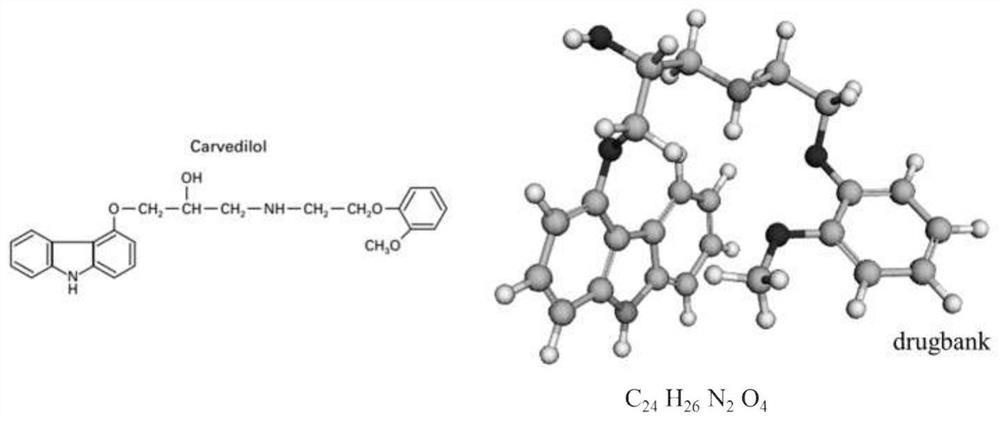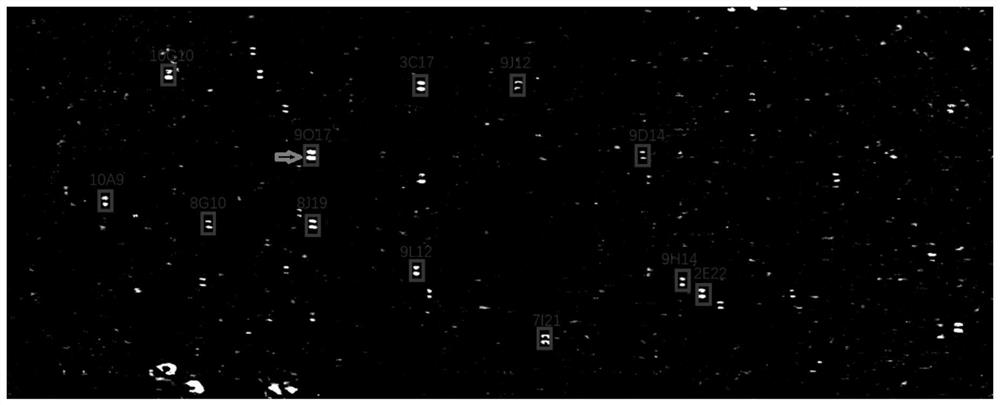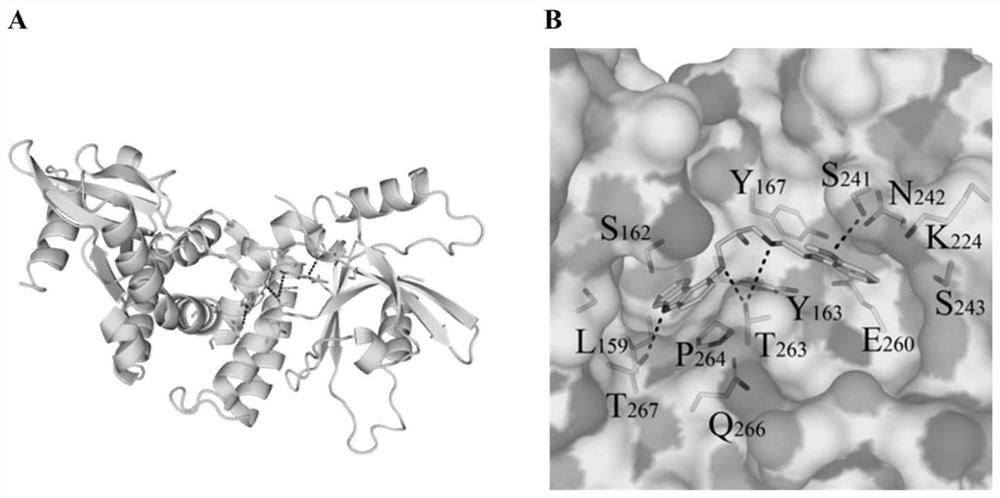Application of carvedilol to preparation of STING agonist and chemotherapeutic sensitization drug
An agonist and drug technology, applied in the field of biomedicine, can solve problems such as carvedilol
- Summary
- Abstract
- Description
- Claims
- Application Information
AI Technical Summary
Problems solved by technology
Method used
Image
Examples
Embodiment 1
[0030] In this example, small molecules that specifically bind to STING proteins were screened out through high-throughput and further verified by docking molecular docking technology. The specific experimental methods and results are as follows:
[0031] (1) High-throughput screening of small molecules specifically bound to STING proteins
[0032] On a small-molecule microarray containing 3375 active compounds, use 0.5 mg / mL BSA solution to block the isocyanate groups on the unprinted small-molecule positions on the substrate, and use a volume of 1.5 mL and a concentration of 10 μg / mL for the target Protein STING was reacted with small molecule microarray for 1 hour. figure 2 Eleven small molecules were shown to exhibit strong binding affinity to STING, including Carvedilol (9O17, figure 2 The arrow in ), which means that Carvedilol can be combined with STING.
[0033] (2) Use docking molecular docking technology to identify whether Carvedilol can bind to STING
[0034] ...
Embodiment 2
[0036] This example verifies that Carvedilol can specifically activate the cGAS-STING pathway through STING. The specific experimental methods and results are as follows:
[0037] Stimulate mouse peritoneal macrophages with cGAMP (STING activator) at a concentration of 0.1 μg / ml, then add DMSO to the control group, and add 5 μM or 10 μM Carvedilol to the experimental group, and use qRCR technology to detect chemotaxis after 2 hours and 4 hours respectively. The expression levels of factors CXCL10 and IFN-β, the results are as follows Figure 4 .
[0038] Depend on Figure 4 It can be seen that Carvedilol can enhance the expression level of IFN-β stimulated by cGAMP, indicating that Carvedilol can specifically activate the cGAS-STING pathway through STING and up-regulate the expression of IFN-β.
Embodiment 3
[0040] This embodiment verifies that Carvedilol can enhance the antitumor effect of etoposide (Etoposide), and the specific experimental methods and results are as follows:
[0041]1. Spread mouse lung cancer cell line LLC and human lung adenocarcinoma cell A549 in 12-well plates and divide them into 4 groups: add DMSO, Carvedilol (10 μM), Etoposide (50 μM) and Carvedilol (10 μM)+ Etoposide (50μM), after 24h of treatment, the expression levels of chemokines CXCL10 and IFN-β were detected by qRCR technology, and the results showed that Carvedilol could significantly enhance the expression of IFN-β up-regulated by Etoposide (such as Figure 5 ).
[0042] 2. Inject C57 mice subcutaneously with LLC cells (1x10 6 Each / only) to build a tumor model, when the long diameter of the tumor reaches 5mm, orally administer Carvedilol and Etoposide on the tenth day or so. The administration concentration of Carvedilol is 20 mg / kg, and the administration concentration of Etoposide is 40 mg / k...
PUM
 Login to View More
Login to View More Abstract
Description
Claims
Application Information
 Login to View More
Login to View More - R&D
- Intellectual Property
- Life Sciences
- Materials
- Tech Scout
- Unparalleled Data Quality
- Higher Quality Content
- 60% Fewer Hallucinations
Browse by: Latest US Patents, China's latest patents, Technical Efficacy Thesaurus, Application Domain, Technology Topic, Popular Technical Reports.
© 2025 PatSnap. All rights reserved.Legal|Privacy policy|Modern Slavery Act Transparency Statement|Sitemap|About US| Contact US: help@patsnap.com



